What Type Of Animal Live In Antarctica
Antarctic animals list, with pictures and information. Observe the amazing animals that alive in one of the globe's harshest environments.
- View / download a Gratuitous Antarctic Animals worksheet for this folio hither: Free Printable Worksheets.
- If you want to know more about the continent of Antarctica, you'll notice all of the facts here: Antarctica Facts.
- Discover more amazing animals here: Animals: The Ultimate Guide.
Antarctic Animals List: Introduction
Antarctica is a vast frozen continent at the far south of the world. It is covered in a thick layer of ice, and surrounded by the icy waters of the Southern ocean.
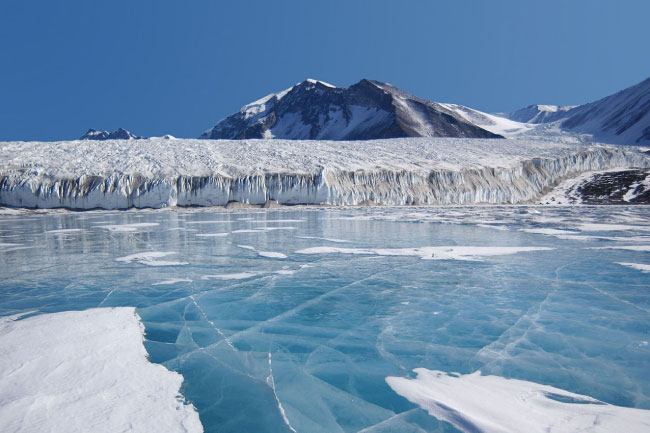
The Antarctic region includes the continent of Antarctica, together with the surrounding bounding main, ice shelves and isle territories that fall inside the Antarctic Convergence – an area where the cold Antarctic seas meet the warmer subantarctic waters.
This listing of Antarctic animals contains species found throughout the Antarctic region.
The Antarctic is a cold, inhospitable identify. It has a depression biodiversity, which means that, compared to other parts of the earth, only a minor number of species are found here.
On the continent of Antarctica itself, very little life exists in the frozen interior. Most species are found on or around the coasts, particularly on the Antarctic Peninsula; the northernmost part of Antarctica.
- You can see a map of Antarctica here: Antarctica Facts.
Life in the Antarctic is a constant struggle. Allow'southward meet some of the animals who call this cold polar region their home …
Antarctic Animals List
Albatross

Albatrosses are large seabirds that spend well-nigh of their lives at ocean. The Wandering Albatross (Diomedea exulans), and other albatross species such as the Grayness-headed albatross (Thalassarche chrysostomsa) and Black-browed albatross (Thalassarche melanophris), are found in the Antarctic region.
The Wandering Boundness has an average wingspan of 3.1 k (10.two ft.); the largest of any bird. It spends nearly of its life in the air, and only lands in lodge to feed and to breed.
Antarctic Krill (Euphausia superba)
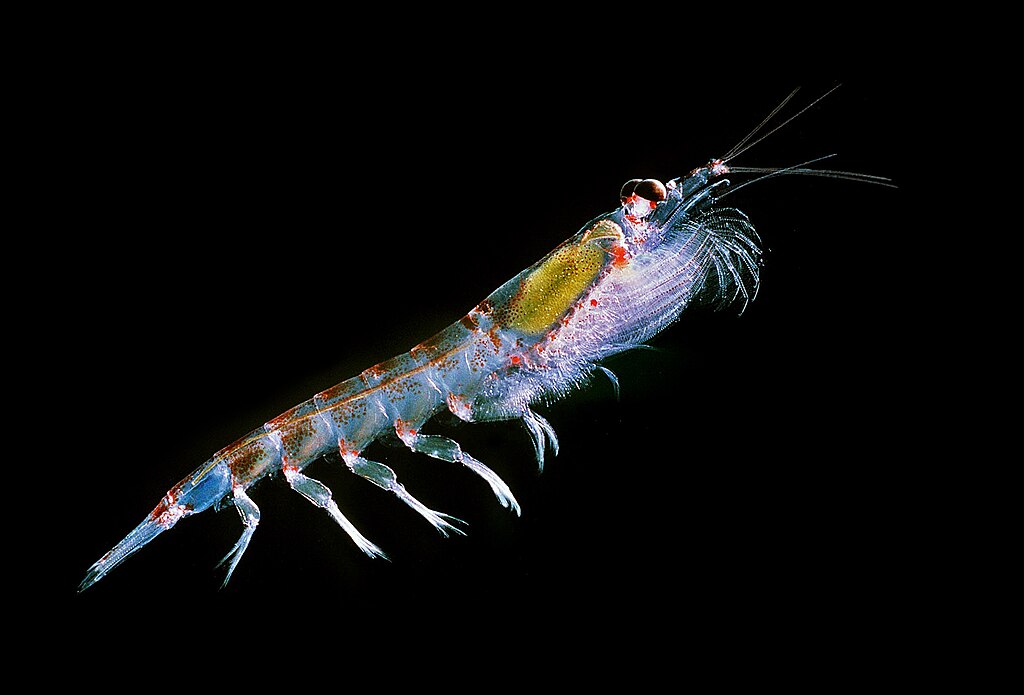
It may be small, but the Antarctic Krill is one of the well-nigh important animals in the Antarctic nutrient chain. This small, shrimp-like crustacean is constitute in vast numbers in the Southern Bounding main, forming groups called swarms which can be seen from space.
Antarctic Krill grow to around half-dozen cm (two.4 in). Krill is eaten by many other Antarctic animals, including whales, seals and seabirds.
The total biomass (weight) of all of the Antarctic Krill in the world is idea to be larger than that of any other species.
Antarctic midge (Belgica antarctica)
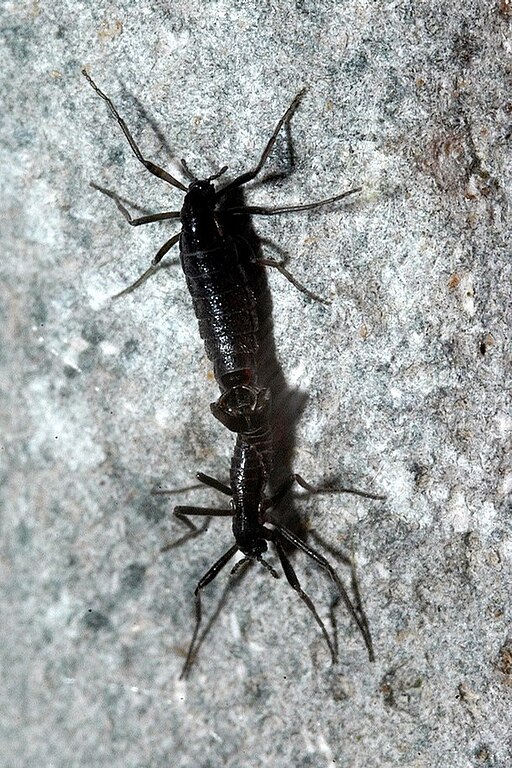
The wingless Antarctic Midge grows up to 6 mm (.25 in) in length. It is the largest state animal (i.e. i that lives purely on land, and doesn't fly or swim) in Antarctica. It is as well the just insect on mainland Antarctica.
Antarctic Springtail (Cryptopygus antarcticus)
This tiny, insect-like beast grows to only 1-2 mm in length and can survive in temperatures as low as -30°C (-22°F). It has a natural chemical antifreeze in its torso to prevent it from freezing.
Antarctic Toothfish / Patagonian Toothfish
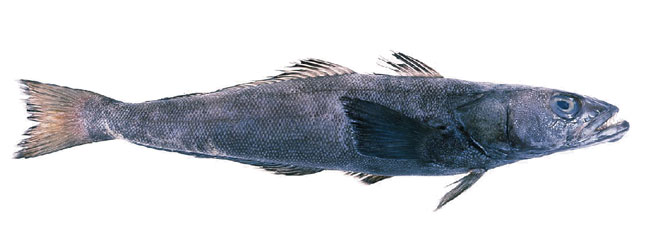
The two species of the Dissostichus genus are the Antarctic toothfish (Dissostichus mawsoni) and the Patagonian toothfish (Dissostichus eleginoides). Both toothfish produce natural antifreeze proteins in their blood and tissue.
Arctic tern (Sterna paradisaea)
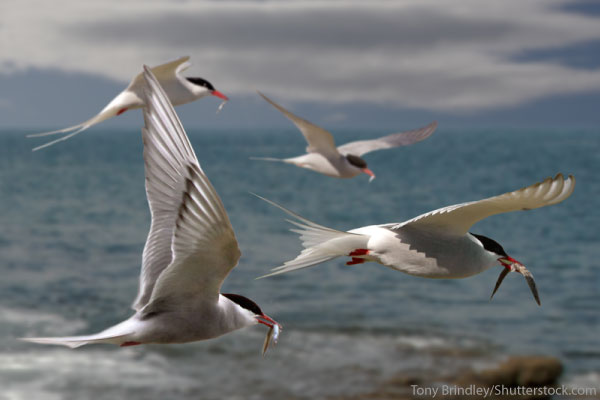
The Arctic Tern is a small seabird with mainly white plume, bright orange legs and neb, and a black 'cap'.
This incredible brutetravels further than any other bird in one year, and is known to cover distances of around 40,000 km (25,000 miles) each twelvemonth.
The Arctic Tern breeds in the Chill before making its way s to the Antarctic. This is why you'll notice it in our Arctic Animals List, every bit well as in this Antarctic Animals listing.
Some other tern constitute in the Antarctic is the Antarctic Tern (Sterna vittata).
Colossal Squid (Mesonychoteuthis hamiltoni)

The Jumbo Squid is as well known as the Antarctic Squid. It grows upwards to 14m (46 ft.) and is thought to be the world'due south heaviest squid (and therefore the world's largest invertebrate).
Giant Antarctic Octopus (Megaleledone Setebos)
The Antarctic Octopus grows to almost one metre (3 ft.) in length, and has a special venom that doesn't freeze at sub-null temperatures.
Hourglass dolphin (Lagenorhynchus cruciger)

The Hourglass Dolphin is a small dolphin that is constitute in Antarctic and subantarctic regions. Its blackness and white markings make it look like a mini Orca. It is very rarely seen.
Icefish
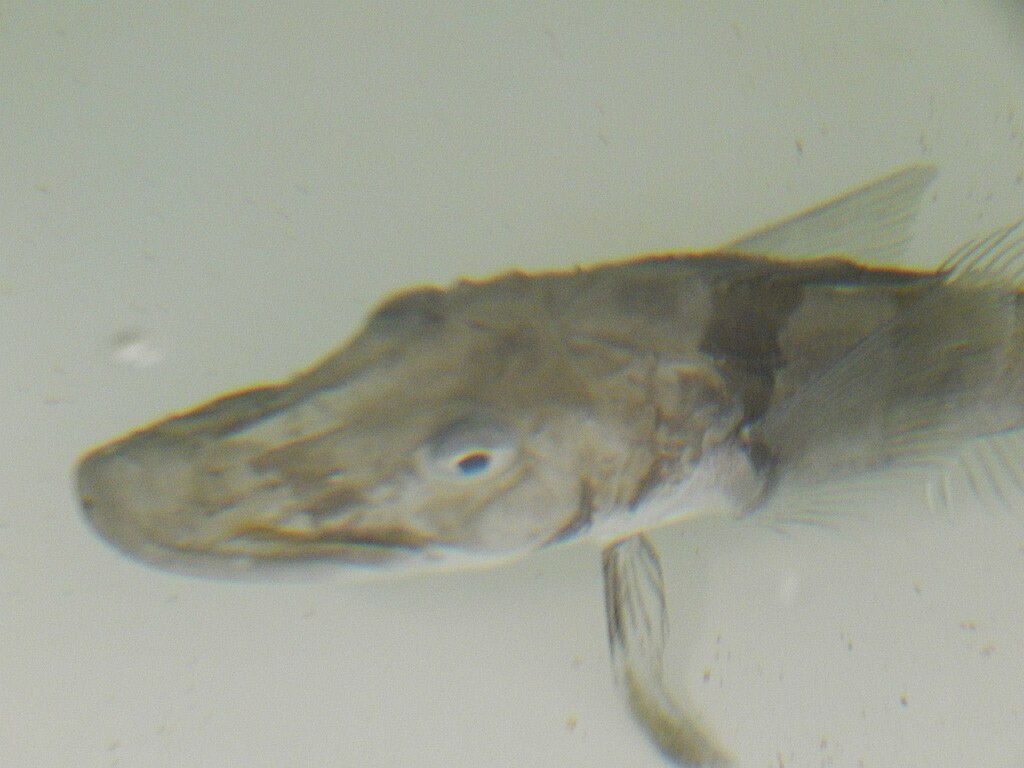
The Icefish (Channichthyidae) family, is found in the Southern ocean. Icefish blood is colourless because information technology lacks haemoglobin (the chemical that processes oxygen). It isn't needed past the Icefish, as the cold Antarctic water holds more oxygen than warmer waters. The lack of hemoglobin makes the Icefish look white.
Imperial Shag (Phalacrocorax atriceps)

The Majestic Shag (also known as the Antarctic Shag) lives on the Antarctic Peninsula of Antarctica, and on many islands in the Southern ocean. It is a large bird, with a white chest and black wings and dorsum. It has distinctive rings of bluish skin effectually its eyes. Because of these, information technology is also chosen the Blue Eyed Shag.
Kelp gull (Larus dominicanus)
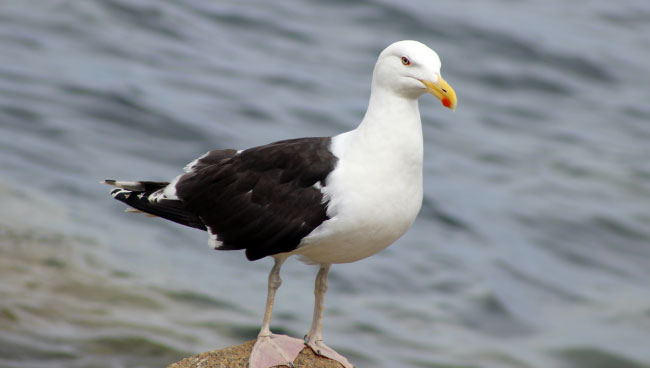
The Kelp Gull is found throughout the southern hemisphere, and one subspecies, Larus dominicanus austrinus is found in Antarctica and surrounding islands. Kelp gulls are mid-sized gulls with black or dark coloured wings and white heads and chests.
Marbled Rockcod (Notothenia rossii)

This species of cod icefish is found in the Southern ocean. The Marbled Rockcod was a victim of overfishing in the 20th century, which decimated its population. Cod icefishes have loftier amounts of fat for insulation. Their bodies also produce antifreeze proteins.
Mites
Alaskozetes antarcticus is a microscopic mite that lives on Antarctica. It eats vegetation and can survive in sub-aught temperatures.
Nematodes
Nematodes are too called Roundworms. There are many different types of nematode, some of which have adapted to life in Antarctica.
Orca (Orcinus orca)
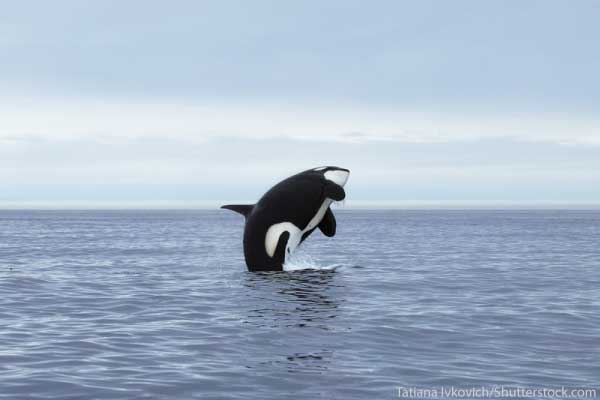
The fearsome Orca, also known as a Killer Whale, is a toothed whale and member of the Oceanic Dolphin (Delphinidae) family unit. Information technology is an apex predator (superlative of the food chain), and its prey includes seals, fish and even other whales. It is establish in all of the world's oceans, including the Southern Body of water around Antarctica.
Read more than about the orca hither: Orca Facts.
Penguins
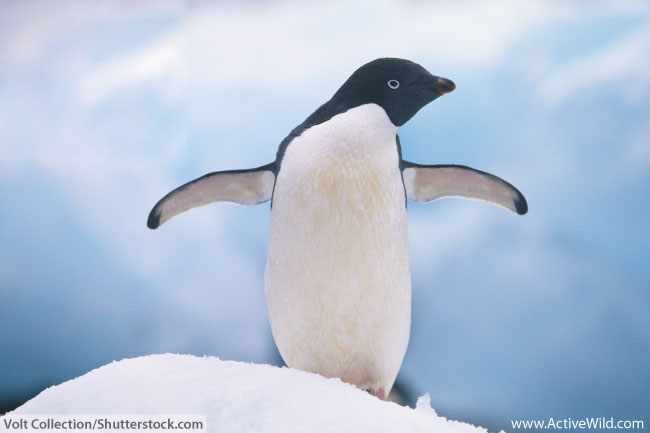
No Antarctic animals list would be complete without penguins! Penguins are distinctive flightless birds of the Southern Hemisphere. Their wings accept evolved into flippers, which they apply to 'wing' through the h2o in pursuit of krill, fish, and other prey.
Five species of penguin brood on Antarctica. These are the: Emperor penguin, Chinstrap penguin, Adélie penguin, Gentoo penguin and Macaroni penguin.
Other penguin species, such as the Rex Penguin and the Rockhopper Penguin are besides establish on subantarctic islands well-nigh Antarctica.
- Yous can find out more than nigh the penguins that live in Antarctica here: Antarctic Penguins.
Petrels
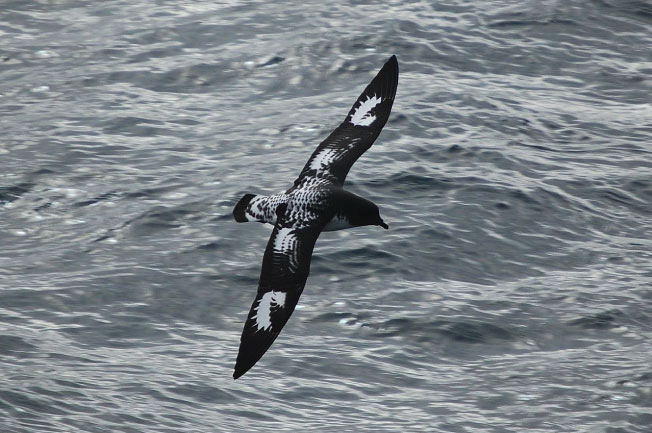
Petrels are seabirds that only return to land to breed. Several species are found in the Antarctic, including the Snow Petrel (Pagodroma nivea),Antarctic Petrel (Thalassoica antarctica), Antarctic giant petrel (Macronectes giganteus), Cape Petrel (Daption capense) and Antarctic prion (Pachyptila desolata).
The Snow Petrel breeds exclusively in Antarctica, and breeds further south than any other bird.
Phytoplankton
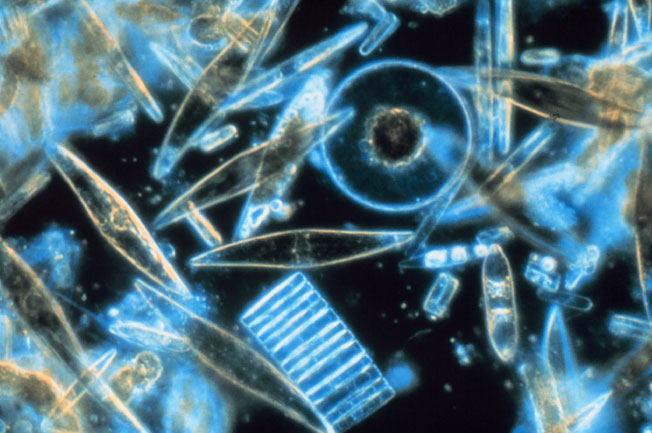
Phytoplankton are microscopic plants that migrate in the upper layer of the bounding main. They live off carbon dioxide and obtain energy by photosynthesis. They form an important lower lever of the Antarctic food chain.
Rotifers

Rotifers are microscopic animals found in Antarctic waters and soil.
Seals

Seals are marine mammals in the Pinniped grouping of animals. (Marine mammals are mammals that either live in the sea, or whose lifestyle is reliant on the bounding main.)
Seals are found all around the world, but almost species prefer colder regions. Seals found in the Antarctic include the Southern Elephant Seal – the world's largest carnivoran, and the Crabeater Seal – the earth'south commonest seal. Other Antarctic seals include the Antarctic Fur Seal, Leopard Seal, Ross Seal andWeddell Seal.
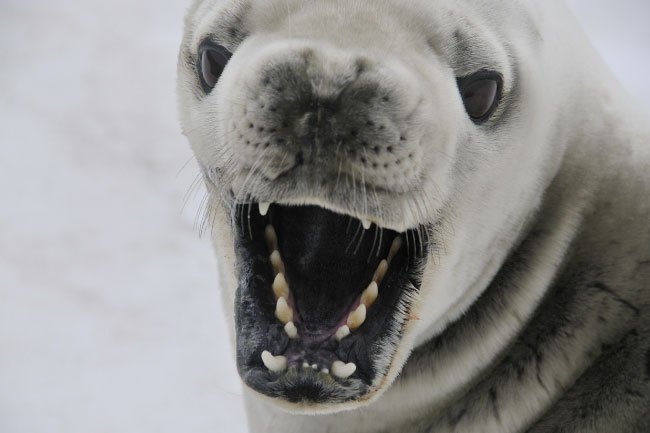
- You lot can notice more than information almost Antarctic seals hither: Antarctic Seals.
Spectacled porpoise (Phocoena dioptrica)
The Spectacled Porpoise is a rarely-seen porpoise that is establish in subantarctic and Antarctic waters. Information technology has a black back and white undersides. Markings around its optics make the Spectacled Porpoise appear to be wearing spectacles, hence its name.
Skua
Skuas are seabirds that are institute in many parts of the world. They are well-known for being 'kleptoparasites'. This means that they let other birds notice food before taking it for themselves. Skuas will too consume other seabirds and their chicks.
Due south Polar Skua (Stercorarius maccormicki)

Due south Polar Skuas are large, powerful birds. They breed on Antarctic coasts during November and December, and spend winter in warmer climes. (Recollect that the summertime months of the Southern Hemisphere and the wintertime months of the Northern Hemisphere.)
Chocolate-brown Skua (Stercorarius antarcticus)
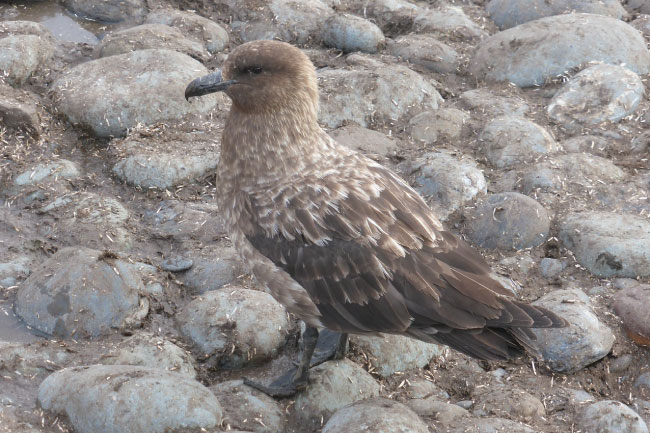
The Brown Skua is too known as the Antarctic Skua. It is a big, heavy bird that, similar the other Skuas, will happily steal nutrient from other large bird species. The Brown Skua breeds in Antarctic regions and migrates north during other times of the yr.
Snowy Sheathbill (Chionis albus)

The Snowy Sheathbill is a pigeon-sized bird with white feathers and a pink face. Information technology is a scavenger and a kleptoparasite. Information technology is the only country bird native to Antarctica that isn't a penguin.
Tardigrades

Tardigrades are microscopic animals with eight legs. They can withstand extreme weather condition and accept been constitute on mountaintops, in the sea, and on Antarctica.
Whales
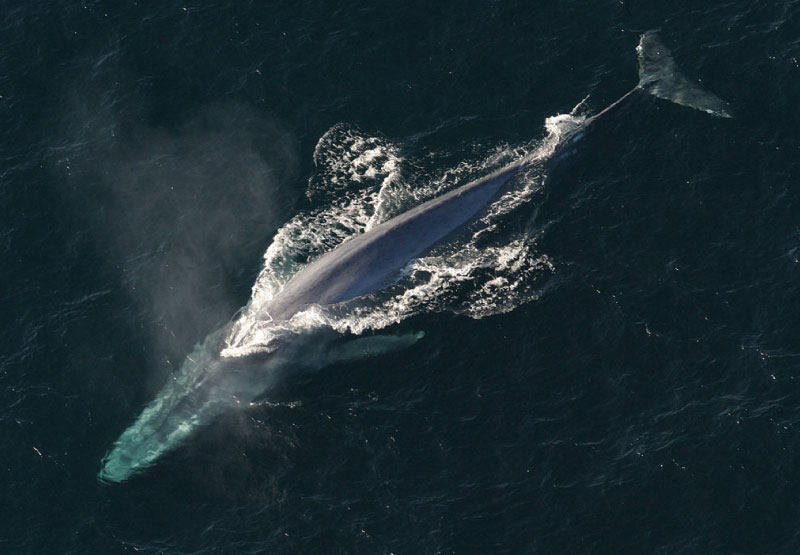
Whales are attracted to the cold waters of the Antarctic region by the huge swarms of Antarctic Krill (which you can read virtually further up this Antarctic animals list) that are present in the Southern ocean .
Whales seen in the Antarctic include: Southern right whale, Antarctic minke whale, Blue Whale, Humpback whale, Sperm whale, and the Southern Bottlenose whale.
- You can observe out more almost all of the whales seen the the Antarctic region hither: Antarctic Whales.
Wilson'south storm petrel (Oceanites oceanicus)

Wilson's storm petrel is one of the earth'due south commonest species of bird. Plant all effectually the Southern Hemisphere, and in many parts of the Northern Hemisphere, it spends its life at sea and only returns to state to breed.
Other petrels constitute in Antarctica are the Black-bellied tempest petrel (Fregetta tropica) and the Grey-backed storm petrel (Garrodia nereis).
Zooplankton

Zooplankton are animals that drift in the sea. The word 'Zooplankton' comes from Greek words meaning 'Animate being' and 'Drifter'. Most Zooplankton are very small, and eat even smaller plants called phytoplankton.

Zooplankton include the larvae of shrimps and crabs, and about are besides small to be seen with the naked center. However, Zooplankton also includes larger animals such as Krill and Jellyfish.
Zooplankton form an important function of the Antarctic nutrient chain.
Antarctic Animals List Conclusion
Nosotros promise that you have enjoyed learning most the many different kinds of Antarctic animals. At that place are far fewer species constitute in the Antarctic than in other, more biodiverse, areas such as rainforests. Nonetheless, the species that exercise manage to exist on and effectually this freezing continent are especially interesting, due to the special adaptations they have had to evolve.
If there is an animal on this list that you are particularly interested in, why non larn a bit more about it? Y'all could try to find out its conservation status, if it has any special adaptations for Antarctic life, and what information technology eats … or what eats it!
Y'all can find more data nigh the earth's Polar Regions on the following pages:
- Observe out more about the frozen continent of Antarctica: Antarctica Facts.
- Detect the N Pole: Arctic Facts.
- Discover out more than nearly the globe'south animals: Animals: The Ultimate Guide.
Source: https://www.activewild.com/antarctic-animals-list/
Posted by: hortonsomint1948.blogspot.com

0 Response to "What Type Of Animal Live In Antarctica"
Post a Comment